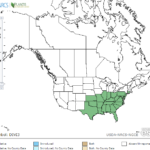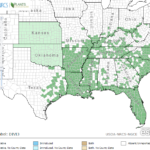Diodia virginiana
USDA, NRCS. 2018. The PLANTS Database (http://plants.usda.gov, 28 March 2018). National Plant Data Team, Greensboro, NC 27401-4901 USA.
Illustration: USDA-NRCS PLANTS Database / USDA NRCS. Wetland flora: Field office illustrated guide to plant species. USDA Natural Resources Conservation Service.
What is Virginia Buttonweed?
Physical Characteristics
Leaves:
- Immobile
- Oval or sword shaped
- Bright green in color
- Up to 3.5 inches long
- Up to 0.78 inches wide
Flowers:
- White in color
- 0.28-0.39 inches long
Fruit:
- Egg-shaped
- 0.2-0.3 inches long
- Up to 0.2 inches across
- Bare
- Topped with 2-3 flower teeth
Stem:
- Splitting branches
- Branches up to 2 feet long
Roots:
- Spreading
Where Does it Grow?
Virginia buttonweed can be found in swamps, wet meadows, marshes, coastal prairies, and in the mud along streams and ponds.
Pros and Cons of Virginia Buttonweed
Submerged portions of all aquatic plants provide habitats for many micro and macro invertebrates. These invertebrates in turn are used as food by fish and other wildlife species (e.g. amphibians, reptiles, ducks, etc.). After aquatic plants die, their decomposition by bacteria and fungi provides food (called “detritus”) for many aquatic invertebrates.




